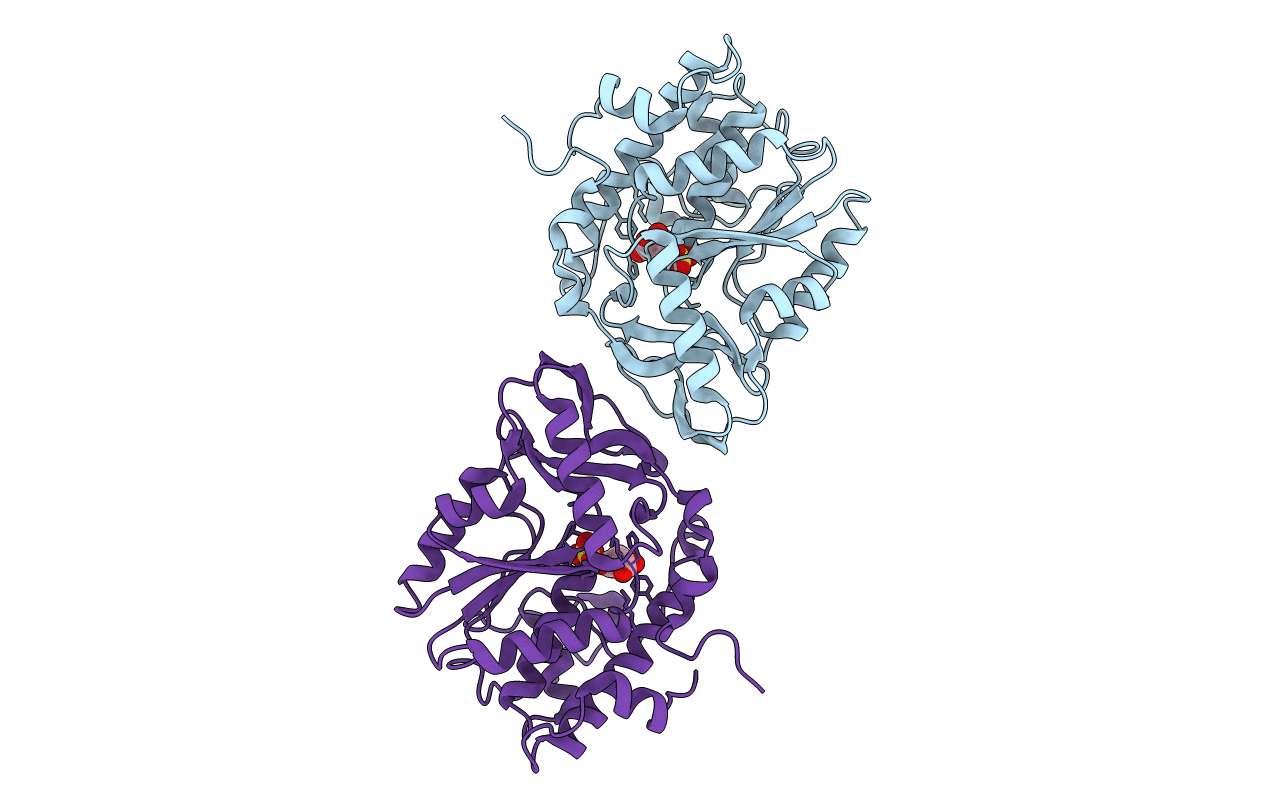
Deposition Date
2005-09-26
Release Date
2006-11-07
Last Version Date
2024-10-30
Entry Detail
PDB ID:
2B4U
Keywords:
Title:
Structure of the C252S mutant of Selenomonas ruminantium PTP-like phytase
Biological Source:
Source Organism:
Selenomonas ruminantium (Taxon ID: 971)
Host Organism:
Method Details:
Experimental Method:
Resolution:
2.00 Å
R-Value Free:
0.23
R-Value Work:
0.19
Space Group:
P 1 21 1


